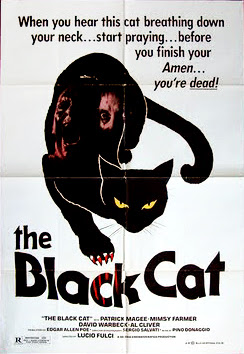The third, final and frankly, greatest part of Argento’s introductory Animal Trilogy, “Four Flies on Grey Velvet” is also one the director’s best works. Sticking to his hand-rails, the film carries the same “wrong man” plot of an innocent man who is dragged into the path of a serial killer, set-up in an empty theater, with incriminating pictures of him holding the knife, standing over the dead body.
-
The innocent man in question is rock drummer Roberto Tobias, who is in turn taunted by the assailant with the victim’s identification arriving later in the mail. Roberto then becomes paranoid and haunted by images of a beheading – a premonition, perhaps?
-
“Four Flies on Grey Velvet” may have wrapped up his coincidental Animal Trilogy, but honestly, the film bears an even stronger resemblance to his later work in both structure and technique.
-
As he would also employ in “Deep Red,” Argento showcases his unique, virtuoso camera work with an especially extravagant array of first-person shots (murders, even) as he concurrently alters our perspective and conceals the killer’s identity.
-
“Four Flies” also continues Argento’s fascination with recollection, either the misremembering of past events or the realization of them, and it continues in the way that Roberto discovers the identity of the killer, which directly relates to the film’s title.
-
This would also be the last film that Ennio Morricone would work on for Dario Argento (who would switch to the progressive rock band Goblin henceforth) and it’s probably the composer’s best work for the director. The film begins with thrashing drums and ends with a slippery, string-piece with soothing vocals that, quite appropriately, sounds like the wings of a fly. [B]
 Showing us what happened at the Norweigan camp which found and accidentally let loose the imitative title creature, the film is almost dead-on-arrival, going through the motions of Carpenter's vision with very creative touches of its own outside of perhaps a creepy dental identifier and a female lead.
Showing us what happened at the Norweigan camp which found and accidentally let loose the imitative title creature, the film is almost dead-on-arrival, going through the motions of Carpenter's vision with very creative touches of its own outside of perhaps a creepy dental identifier and a female lead.


























